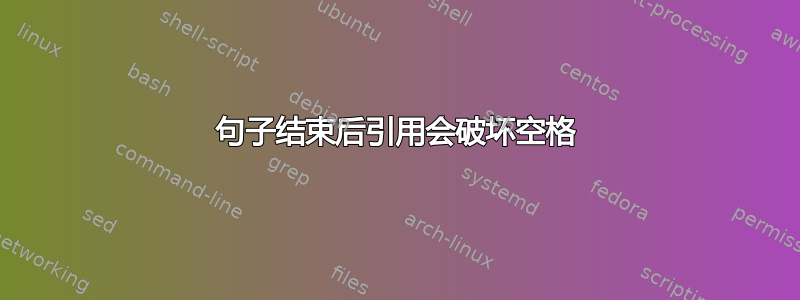
我正在使用报告类来撰写论文。有时,多个连续的句子引用同一来源,因此Booh \cite{source}. Baah \cite{source}.我不写,而是写Booh. Baah. \cite{source}。但是,引用参考文献后面有一个放大的空格(表示句子的结尾),后面跟着一个正常的空格。
这样,读者就会将引用参考与下面的句子联系起来,而不是它后面的句子。
我可以用 来抑制扩大的空间\<space>。但是如何获得引用后的扩大的空间?
最小示例:
\documentclass{report}
\begin{document}
Hello, I am a sentence \cite{testcitation}. I am
a sentence as well. \cite{testcitation} And me too!
\end{document}
输出:
答案1
我认为您的读者不会理解句号后面的引文指的是什么。话虽如此,您可以这样做:
\documentclass{report}
\usepackage{xpatch}
\makeatletter
\xpretocmd{\cite}{\leavevmode\spacefactor@remember}{}{}
\xapptocmd{\@citex}{\spacefactor@reset}{}{}
\newcommand{\spacefactor@remember}{%
\ifdim\lastskip>\z@\unskip~\fi
\xdef\spacefactor@value{\the\spacefactor}%
\spacefactor\@m
}
\newcommand{\spacefactor@reset}{\spacefactor=\spacefactor@value\relax}
\makeatother
\begin{document}
\xspaceskip=20pt % just to show the extended spaces more clearly
Hello, I am a sentence \cite{testcitation}. I am
a sentence as well. \cite{testcitation} And me too!
\end{document}
这个设置\xspaceskip只是为了更清楚地标记句末空格。




